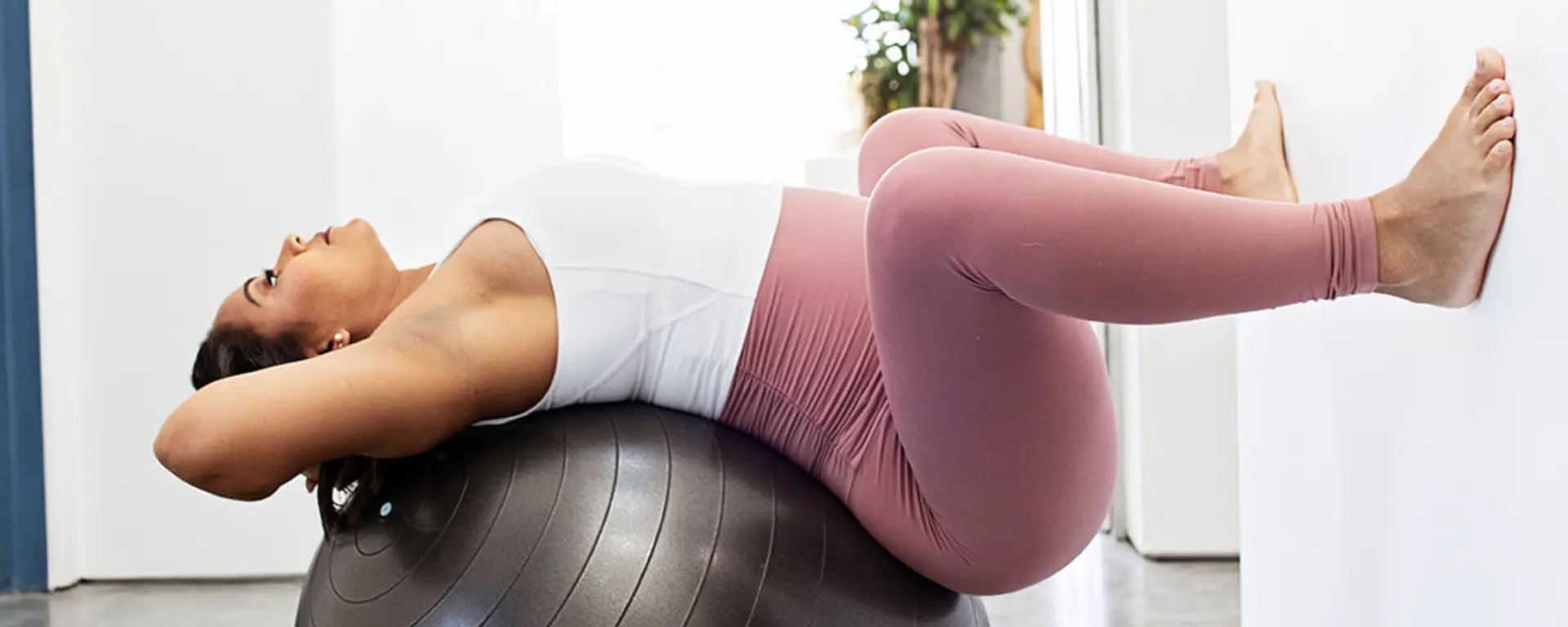Hypertonic Pelvic Floor Exercises: Why You Need Them
By Courtney Virden

Living with symptoms is difficult, and there are hypertonic pelvic floor treatment options. This means you can reduce and even eliminate your symptoms, and most won’t need hypertonic pelvic floor medication. I have helped countless people overcome this and train their pelvic floor to relax. So, it is possible. Let’s dive deeper and get you on a path to restoring pelvic hypertonia.
Hypertonic Pelvic Floor Symptoms
The tight pelvic floor symptoms males and females face are common. Some of the most common symptoms are:
- Bladder Issues – Urinary incontinence (bladder leakage), painful or frequent urination, or difficulty urinating.
- Painful Intercourse – In a hypertonic pelvic floor, females often experience pain during penetration and non-penetrative sex. Even a pelvic exam can be painful for women.
- Painful Ejaculation – With a hypertonic pelvic floor males about 38-59% experience this.
- Tailbone Pain/Lower Back Pain – The pelvic floor connects to the coccyx (tailbone) and pubic bone, and a tight pelvic floor can cause pain and pulling, especially when sitting.
- Chronic Pelvic Pain – Both women and men experience this. Pain in the hips.
- Constipation, Bloating, and Difficulty Passing Stool – With hypertonic pelvic floor disorder, the muscles of the pelvic floor have a difficult time relaxing, which can make it difficult and even painful to have a bowel movement.
- Vulvar and Urethral Pain – When the pelvic muscles are too tight, it can lead to pain and burning. Some women get recurring UTI infections.
- Difficulty Achieving Orgasm or Complete Inability to Orgasm – With hypertonic pelvic floor muscles female symptoms can often be sexual. When women climax, the pelvic floor is rhythmically contracting and relaxing. When the muscles are chronically spasmed, the pelvic floor may not be able to relax enough to orgasm.
What Causes A Hypertonic Pelvic Floor
Some hypertonic pelvic floor causes are:
- Chronic or high levels of stress and anxiety
- Shallow breathing
- Obesity
- IBS (Irritable Bowel Syndrome)
- Inappropriate pelvic floor exercises (Kegels make the pelvic floor tight)
- History of abuse or trauma
- Excessive holding of bladder and bowel movements
- Chronic coughing episodes
- Heavy lifting
As you can see, there are many causes of tightness. With an overactive pelvic floor, males and females both suffer and often in silence. Some turn to medication for hypertonic pelvic floor muscle dysfunction. Muscle relaxers can provide temporary relief. Please avoid Kegel exercises since they will further tighten the pelvic floor.
Internal pelvic floor physical therapy can help some. Physical therapists can help with trigger points and release tissue. A breathing technique called diaphragmatic breathing (deep breathing, aka belly breathing) is also helpful. With hypertonic pelvic floor female symptoms, it can feel like they overtake your life. Menstrual cramps may be worse because of the spasms. The impact is not just physical but also emotional. It’s the same for men.
Now that we understand what a hypertonic pelvic floor feels like and the causes, let’s go over how to fix a hypertonic pelvic floor.
Relax Your Pelvic Floor: Importance of Hypertonic Pelvic Floor Exercises
Hypertonic pelvic floor muscles are not strong; they are weak. With pelvic floor hypertonia, you want to learn to relax, but you also need to build strength. Exercises for the hypertonic pelvic floor will train the muscles to contract and relax.
I have done countless pelvic floor exercises and always choose ones that utilize eccentric and concentric contractions. Since a woman’s pelvic floor has fourteen muscles, it is essential to do several different exercises to train the muscles in all planes of motion.
The exercises in the video below are incredible whether you have high-tone pelvic floor dysfunction or low-tone. They are part of our series for restoring proper tone throughout the pelvic floor. Remember, if you have overactive pelvic floor muscles, stay away from exercises telling you to contract and tighten excessively.
You can begin our restorative program today and join our thriving community. Do not let hypertonic pelvic floor dysfunction be an issue anymore! Do not let hypertonic pelvic floor dysfunction be an issue anymore!
3 Hypertonic Pelvic Floor Exercises
Exercise 1: Roll-Overs
Get into a deep squat behind the stability ball. Stay on your toes and balls of the feet. Wrap around the ball, pressing your pubic bone into the ball to stretch and open up the pelvic floor, thighs, hips, and lower back. Roll forward and back, keeping your pubic bone pressed into the ball.
Exercise 2: Knee to Chest
Lie on your back on a mat. Bend one knee and place your foot on the ground. The other leg is rested on the stability ball. Tilt your pubic bone toward your spine to gently lift your glutes off the mat and go into a pelvic tilt.
The leg on the ball will bend, and you will roll the ball toward your shoulder. The knee will drop towards the floor, and you will roll to the outside of the foot on the ball. Return to the starting position and repeat. Then repeat on the other side.
Exercise 3: Ball Circles
Lie on a mat with your feet resting on an exercise ball. Tilt your pubic bone towards your spine to get into a slight pelvic tilt. Lift one foot straight up towards the ceiling.
Do small clockwise and counterclockwise circles. Then, switch legs and repeat.